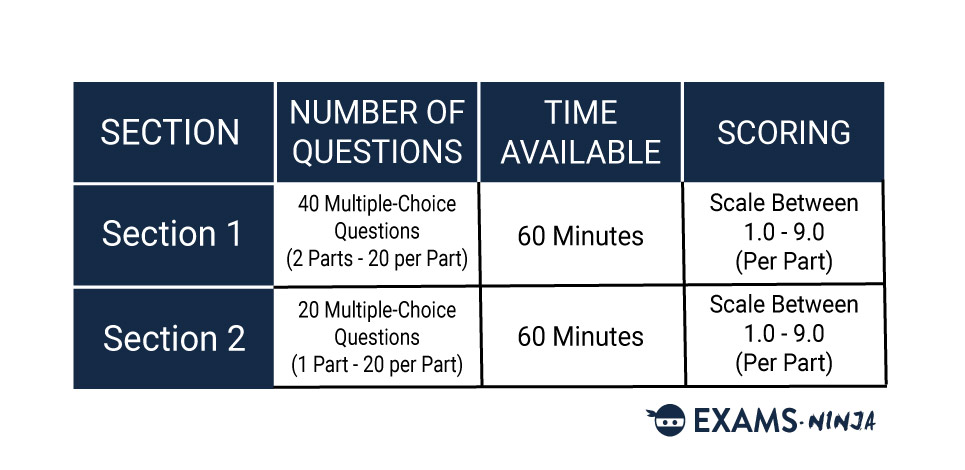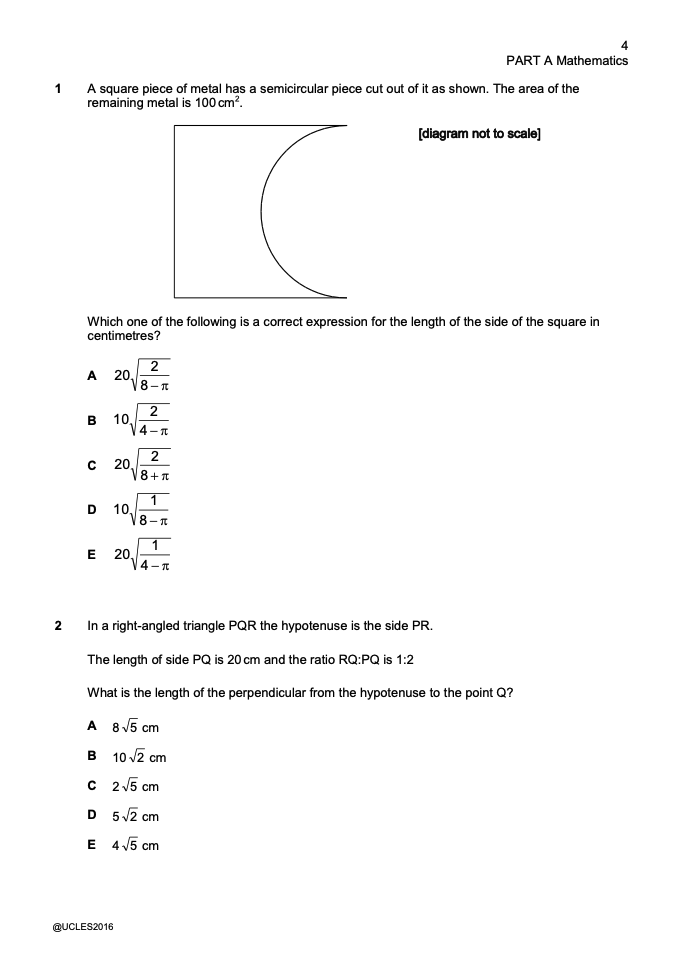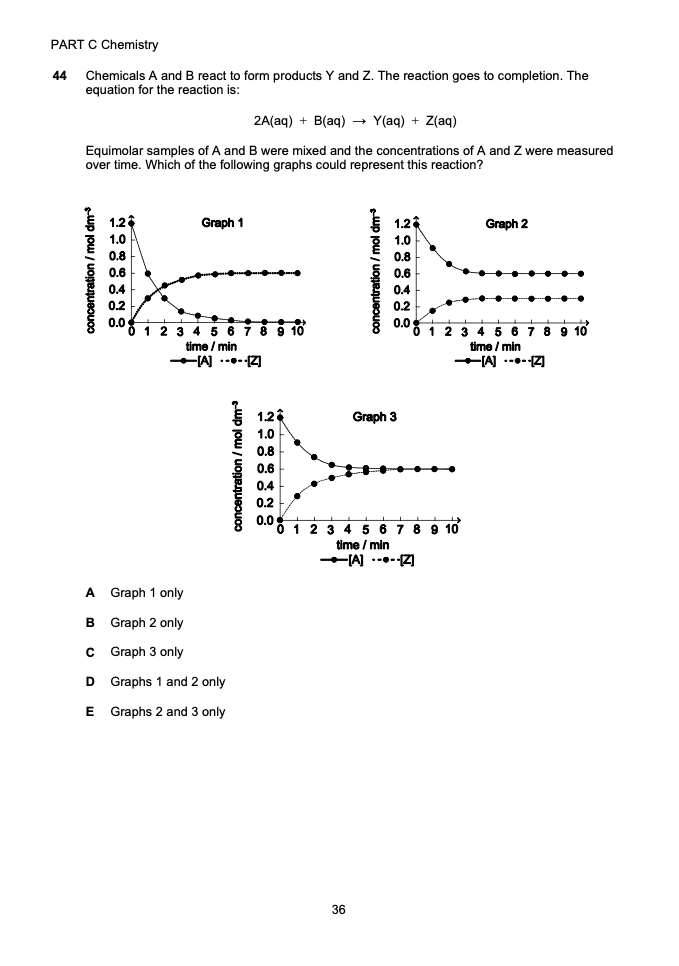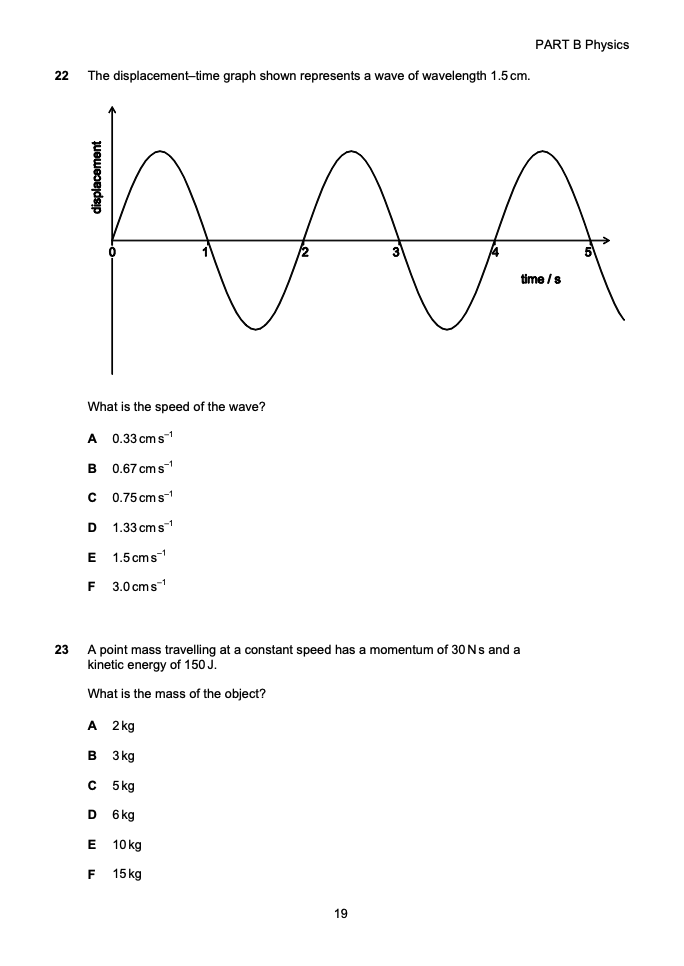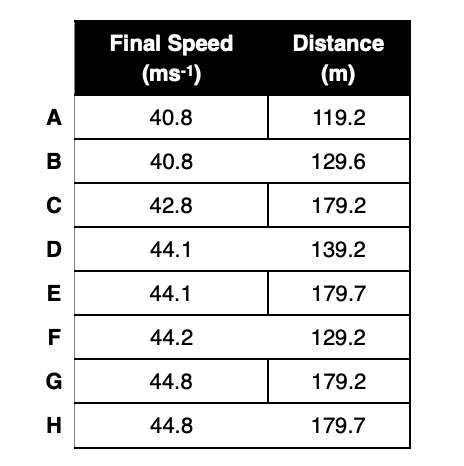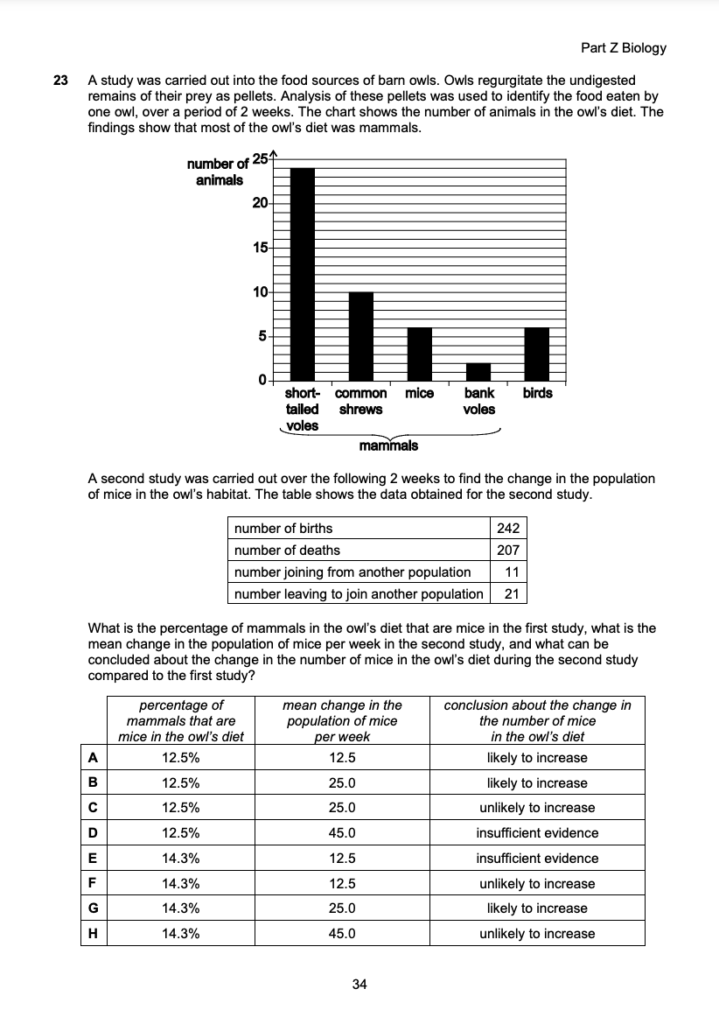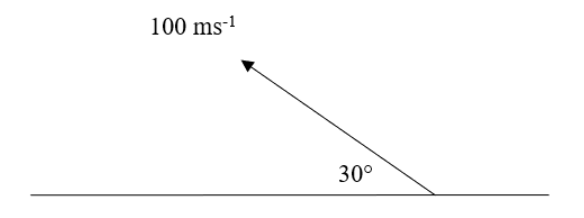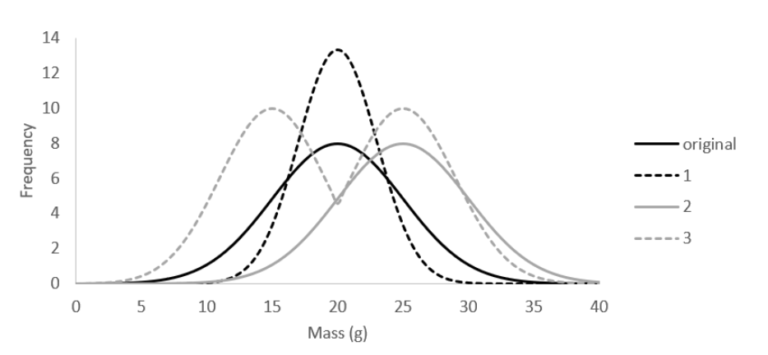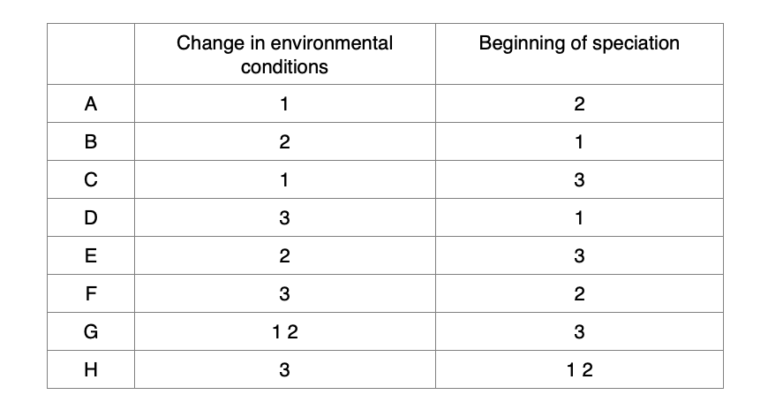YOUR ULTIMATE GUIDE
The Definitive Starter Guide To NSAA Cambridge (2023)
Written by: Matt Amalfitano-Stroud
Please be aware that, as of 2024, the Natural Sciences Admissions Assessment (NSAA) is no longer being used by the University of Cambridge. Cambridge applicants for Natural Sciences, Engineering, Veterinary Medicine and Chemical Engineering & Biotechnology will be required to sit the Engineering and Science Admissions Test (ESAT).
Congratulations; you have made the awesome decision to apply to study one of the most amazing subjects, at one of the world’s most amazing universities! But one of the major hurdles standing in the way of your dream is the the Natural Sciences Admissions Assessment, or NSAA. This guide is going to get you started on your preparation journey, explaining everything you need to know about the test. Let’s get started!
1/4
NSAA BASICS: EVERYTHING YOU NEED TO KNOW
This is everything you need to know about sitting the NSAA. We’ll cover the sections of the test, who needs to sit the test, relevant dates, scoring for the NSAA and more.


What is the NSAA and Who Needs to Sit it?
The Natural Sciences Admissions Assessment (NSAA) is a two-hour written exam for those who wish to study Natural Sciences and Veterinary Sciences at the University of Cambridge.
The NSAA is sat on October 18th in 2023. It’s the next milestone in your application following your UCAS Personal Statement, and before your in-person interview.
What is the Structure of the NSAA?
The NSAA lasts two-hours and is divided into two sections lasting one hour each. These sections each contain “Parts“, which are made up of 20 multiple-choice questions covering a specific subject. You will not be required to answer every question in each section. Let’s see what each section contains:
Section 1 is made up of four parts, totalling to 80 questions. You will only be required to complete two of these parts, or 40 questions. The first part you will need to complete is a mandatory Mathematics Part (Part A). Afterwards, you will need to to choose one of three parts to answer based on the three major sciences: Physics (Part B), Chemistry (Part C) and Biology (Part D).
Section 2 is made up of three parts. You will need to complete just one of these parts, a total of 20 questions. These parts are Advanced Physics (Part X), Advanced Chemistry (Part Y) and Advanced Biology (Part Z).
This table summarises the requirements for each section:
NSAA Structure
Why is the NSAA used?
The NSAA is designed to test applicants on their content knowledge of science and mathematics, as well as their ability to work under a tight time limit.
The questions with Section 2 provide the test-taker with more advanced scenarios and will test their knowledge of more difficult techniques and question types.
Overall, the NSAA is used in conjunction with other aspects of your application, including your personal statement and submitted work, so it is not judged in isolation. Therefore, a lower score can still be supported by the rest of you application.
Bear in mind that different colleges within Cambridge with have different weightings and standards for your NSAA results, so do your research beforehand so you know which colleges require higher scores.
How Much does the NSAA Cost?
There is no fee required for sitting the NSAA under normal circumstances. However, you may be required to pay a fee if registering with an authorised centre outside of your school/college. School leavers should be able to apply directly from their place of education.
How Do I Register for the NSAA?
Registration for the NSAA begins September 1st. If you currently attend school or college, your first step will be to speak with the exams officer. They will be able to inform you of if your place of education is a registered testing centre. If it is not, you can register for it become one via the Cambridge Assessments Admission Testing website (this must be done before September 16th). You can also apply to sit the NSAA at an alternate testing centre, but a fee may be attached to this.
If your school/college is already registered as a testing centre, you will then need to ask your exams officer to register you for the NSAA. For them to do this you will need to provide them with the following details:
- Personal Details (Name, DOB, etc)
- Your UCAS Number
- The names of the course you intend to apply for
From there, the exam’s officer will be able to get you registered for the test. They will provide you with a candidate number once the process is complete, which will be your proof of registration. You must not lose this number as it may be required on testing day. The deadline for registration is September 30th.
If you require a modified paper, you must apply for this before September 16th and must be able to provide medical evidence proving the requirement. Any other access arrangements must be booked by September 30th, alongside the standard registration deadline.
When and where is the NSAA sat?
In 2023, the NSAA will be sat on October 18th. This is around two weeks earlier than previous year, when the NSAA was in the first week of November. You can usually sit the NSAA at your school or college, but if your school isn’t a registered test centre or you’re not attending a school or college, you can sit the NSAA at an approved test centre.


Key NSAA Dates
As previously stated, the NSAA is sat on October 19th, but there are several other deadlines and important dates to note. Let’s take a look:
| Applicants Deadlines 2023 | |
|---|---|
| Registration Opens | 1st September 2023 |
| Modified Papers Registration /Apply to Become a Testing Centre Deadlines | 16th September 2023 |
| Registration Closes | 30th September 2023 |
| Submit Your UCAS Form | 15th October 2023 |
| NSAA Testing Date | 18th October 2023 |
| NSAA Results Released | January 2024 |
Can I resit the NSAA?
Students cannot attempt the test twice during the same admissions cycle. If you apply again in another admissions cycle, you must take the test again.
What do I Need for the Exam?
The NSAA is a written Assessment, meaning you will be answering on paper. On the day, you will need a soft (HB) pencil for both sections of the exam, and will be issued with a separate answer sheet for each section on which to indicate your answers. Do not bring a calculator into the exam.
However, ensure that you take a watch that can show you the time in seconds. This will allow you to have a much more accurate idea of the time you’re spending on a question.
How Hard is the NSAA?
The NSAA is mainly testing your knowledge of mathematics and science, so the difficulty of the test depends on how well you perform at questions involving content knowledge. Since you’re considering applying to these courses at Cambridge, it can be assumed that you’re pretty confident with your maths and science, so the test shouldn’t be too difficult as long as you prepare properly.
Both sections will feature knowledge at up to A-Level standards, meaning some more advanced topics will be covered. However, you shouldn’t expect to see anything that isn’t covered in your school curriculum .
All questions in the NSAA are multiple-choice, which are generally easier than written questions.
How is the NSAA Scored?
As a multiple-choice test, your initial result will be the number of questions you got correct. There is no negative marking in the exam, so the raw mark will just be your correct answers. Each part is marked separately here.
Your raw marks will then be converted into an NSAA score, which is measured on a scale between 1.0 and 9.0. Again, each part will be marked separately, so your final result will consist of three score on a scale from 1.0 – 9.0.
Below you can see the Score Conversion Tables for both sections of the NSAA in 2021:
Note that there’s not a pass or fail mark for the NSAA. The test is simply designed for the admissions team to determine your suitability for the course alongside the other components of your application. You can learn more about how your score is used in our NSAA Scoring and Results Guide.
Not sure where to start with your NSAA prep?
Exams.Ninja is the perfect place to start your revision, whether you’re looking for guides, practice questions, past papers or everything together! Check out our NSAA Preparation Platform with our free demo to find out how you can boost your score.
2/4
NSAA SECTION 1
This is the first section of the NSAA and starts things off with a slightly more simple selection of questions. It’s not going to be easy however, so let’s take a look at what you need to know for Section 1 of the NSAA.
Section 1 of the NSAA is the first half of the exam and contains the most amount of questions between the two. You will be required to answer 40 questions in total split between two Parts.
Part A is required by all applicants and is based around pure mathematics. Parts B – D each contain questions to Physics, Chemistry and Biology. You will only need to pick one of the three parts to complete, so you will have the chance to choose which science to be tested on.
The format of the NSAA on the question paper is very simple. Each page will contain 1 – 3 questions depending on their size, along with their answer keys.
Answers are to be recorded within the separate answer paper that is provided at the beginning of the exam. This means the question paper can be used for any rough work you may need to perform, as anything on this paper won’t be marked and you will not be provided with additional scrap paper.
Here’s an example of how each page will look on the day:
NSAA Section 1 Page Examples
When it comes to Parts B – D, choosing one simply comes down to answering the set of questions you want to take on.
Be aware that you shouldn’t answer questions outside of your chosen parts. You will not gain any additional points by doing so and could potentially disqualify your paper from being marked.
NSAA Section 1 Specification
The specification for Section 1 of the NSAA covers a lot of different topics. However, remember that you only need to revise 50% of everything covered here for the NSAA.
Of course, you may wish to revise more than one of the three sciences. But to make your NSAA prep as easy as possible, studying just one science will give you more time to perfect your content knowledge!
Let’s take a look at the topics that will be covered in each part of the NSAA, according to the 2022 NSAA Specification:
Part A: Mathematics
- Numeracy Skills
- Units
- Ratio and Proportion
- Geometry
- Statistics
- Probability
You can learn more about this topic in our NSAA Mathematics Guide.
Part B: Physics
- Electricity
- Magnetism
- Mechanics
- Thermal Physics
- Matter
- Waves
- Radioactivity
You can learn more about this topic in our NSAA Physics Guide.
Part C: Physics
- Atomic Structure
- The Periodic Table
- Chemical Reactions
- Quantitative Chemistry
- Group Chemistry
- Acids, Bases and Salts
- Carbon/Organic Chemistry
- Metals
- Chemical Tests
Part D: Biology
- Cells
- Inheritance
- DNA
- Gene Technologies
- Variation
- Enzymes
- Animal Physiology
- Plant Physiology
- Ecosystems
Exams.Ninja Tip
One thing you’ll need to know off by heart are the essential SI prefixes, or Scientific Quantities and Units:
nano- 10–9
micro- 10–6
milli- 10–3
centi- 10–2
deci- 10–1
kilo- 103
mega- 106
giga- 109
None of this should be new to you. In fact, a lot of it will be pretty easy at this point! But that’s not to say the NSAA will be easy and you will need to spend plenty of time revising in order to get the best result you can!
NSAA Section 1 Practice Questions
The kind of questions you can expect to see in the NSAA include calculations, data interpretations, diagram based questions and much, much more! So let’s take a look at some NSAA Section 1 Practice Questions right now:
NSAA Mathematics Practice Question
Solve 3x² + 11x – 20 = 0.
A) 0.75 and -(4/3)
B) -0.75 and 4/3
C) -5 and 4/3
D) 5 and 4/3
E) 12 only
F) -12 only
The correct answer is C.
This is a rare case where you need to factorise a complex polynomial:
(3x)(x) = 0, possible pairs: 2 x -10, 10 x -2, -2 x 10, -10 x 2, 4 x -5, 5 x -4, -4 x 5, -5 x 4
(3x – 4)(x + 5) = 0
3x – 4 = 0, so x = 4/3
x + 5 = 0, so x = -5
NSAA Physics Practice Question
A truck accelerates at 5.6 ms-2 from rest for 8 seconds. Calculate the final speed and the distance travelled in 8 seconds.
The correct answer is G.
v = u + at
v = 0 + 5.6 x 8 = 44.8 ms-1
And s = ut + (at²/2) = 0 + 5.6 x (8²/2) = 179.2
NSAA Chemistry Practice Question
What values of a, b and c are needed to balance the equation below?
a Ca(OH)2 + b H3PO4 → Ca3(PO4)2 + c H2O
A) a = 3 b = 2 c = 6
B) a = 2 b = 2 c = 4
C) a = 3 b = 2 c = 1
D) a = 1 b = 2 c = 3
E) a = 4 b = 2 c = 6
F) a = 3 b = 2 c = 4
The correct answer is A.
There needs to be 3Ca, 12H, 14O and 2P on each side. Only option A satisfies this.
NSAA Biology Practice Question
Which of the following statements are correct about meiosis?
- The DNA content of a gamete is half that of a human red blood cell.
- Meiosis requires ATP.
- Meiosis only takes place in reproductive tissue.
- In meiosis, a diploid cell divides in such a way so as to produce two haploid cells.
A) 1 only
B) 3 only
C) 1 and 2 only
D) 2 and 3 only
E) 2 and 4 only
F) 1, 2, 3 and 4
The correct answer is D.
Remember that red blood cells don’t have a nucleus and therefore have no DNA. In meiosis, a diploid cell divides in such a way so as to produce four haploid cells. Any type of cell division will require energy.
If you want to learn even more about Section 1 of the NSAA, learn some helpful tips or try out even more practice questions, then check out our NSAA Section 1 Guide!
Start your NSAA Journey the right way now!
With the NSAA.Ninja Preparation Platform, you’ll have access to over 100 guides and over 1,200 practice questions for every part of the NSAA. Optimise your NSAA revision strategy now with our free demo.
3/4
NSAA SECTION 2
Things are getting more advanced now with Section 2! These questions are designed take you out of your comfort zone and further stretch your thinking. In addition to the core knowledge you’ve needed for Section 1, you will need to apply these principles in unfamiliar contexts in Section 2 questions.
Section 2 of the NSAA is smaller the Section 1, but don’t mistake this for it being easier!
Here, you will have 60 minutes to answer 20 questions within one of three parts. These parts are once again based on the three sciences, with no mathematics part included this time around.
However, you’ll instead be tackling Advanced Physics, Advanced Chemistry or Advanced Biology.
What Makes Section 2 Advanced?
Basically, the questions are harder!
To be more specific, Section 2 will require you to have a more in-depth knowledge of which ever science you choose take on. While this does mean learning more facts and formulas, it also relates to the types of questions being asked. Many of these questions will require you to apply your knowledge into unfamiliar scenarios.
It won’t involve anything that you aren’t already aware of, but you will need to develop a good understanding of not only the theory behind the science, but the application of it as well.
All the same rules from Section 1 apply to Section 2 as well. Only answer one out of the three parts, which are labeled Part X – Part Z. Answering any questions outside of your chosen part will put your application at risk, so pay attention to where your part begins and ends on the question paper.
The page layout is also largely the same, although the questions are generally bigger, with more context and information, so you’ll only see one per page most of the time. Let’s check out some pages to get a better idea of what to expect:
NSAA Section 2 Page Examples
NSAA Section 2 Specification
Let’s rundown the different topics covered in Section 2 from the NSAA 2022 Specification. Here, you’re going to find a bit of overlap with the Section 1 Specification in terms of the broad subjects tackled. However, required knowledge is a lot more in-depth for each science, so there’s going to be plenty of unique content to revise!
Although there are no dedicated Mathematics questions in Section 2, you’re still going to need to know a variety of principles in order to effectively answer many of the questions that are included. Therefore, Advanced Mathematics is also included in the specification.
Also note that the required knowledge for Advanced Biology was only introduced recently for the 2022 Specification. As such, it will currently be harder to find dedicated NSAA revision material for Part Z.
NSAA Advanced Mathematics
- Algebra and Functions
- Sequence and Series
- 2D Coordinate Geometry
- Trigonometry
- Exponentials and Logarithms
- Differentiation
- Integration
- Graphs of Functions
You can learn more about this topic in our NSAA Mathematics Guide.
Part X: Advanced Mathematics
- Forces and Equilibrium
- Kinematics
- Newton's Laws
- Momentum
- Energy
- Materials
- Waves
- Electricity
You can learn more about this topic in our NSAA Physics Guide.
Part Y: Advanced Chemistry
- Atomic Structure
- Bonding and Structure
- Energetics
- Kinetics
- Equilibria
- Redox
- Inorganic Chemistry and the Period Table
- Organic Chemistry
Part Z: Advanced Biology
- Cell Structure
- Biological Membranes
- Cell Division and Organisation
- Biological Molecules
- Nucleotides and Nucleic Acids
- Enzymes
- Animal Physiology
- Plant Physiology
Exams.Ninja Tip
Remember that calculators aren’t allowed in the NSAA. However, there are a lot of questions in Section 2 that will require complex calculations.
Although it’s not covered on the official specification, we would recommend that you practice using calculus in order to more effectively answer these questions. Our Calculus Guide is in relation to the PAT, a physics exam required by Oxford. However, the major principles within the guide are relevant to any exam, so we would recommend checking it out if you’re not as confident in you calculus skills.
The more you look into the topics, the more difficult they may seem. However, creating a consistent revision strategy and taking on topics one-by-one will make everything feel super manageable. Strong preparation is the key to the best results in the NSAA.
You can use our 6-Month NSAA Preparation Timeline to build your own plan for your revision and get your prep off to a perfect start!
NSAA Section 2 Practice Questions
With the specification now covered, it’s time to take a look at some practice questions for Section 2 of the NSAA, along with worked solutions to show you the method that questions like these are typically answered with.
NSAA Advanced Physics Practice Question
A cannonball is fired from ground level at 30° to the horizontal with an initial velocity of 100 ms-1. The ground is flat and air resistance is negligible. (Take g =10 Nkg-1).
How far does the cannon ball travel horizontally before it hits the ground?
A) 250 m
B) 250√2 m
C) 300 m
D) 500√3 m
E) 500 m
F) (500/√2) m
G) 600√3 m
H) 500√2 m
The correct answer is D.
Split the initial velocity into horizontal and vertical components and use the vertical component to find out how long the ball is in the air. The horizontal velocity component is constant as air resistance is negligible.
Initial vertical component: uv = u0 sin0 = 100sin30 = 100 x 0.5 = 50 ms-1
Initial horizontal component: uh = u0 cos0 = 100cos30 = 100 x (√3/2) = 50√3 ms-1
Use equation of motion for vertical direction: sv = ut + (1/2)at² = uvt – (1/2)gt² = 50t – (1/2) x 10t²
Note: positive direction has been taken as upwards so a = – g as gravity acts downwards.
Remember vertical displacement will be zero when the ball returns to original height (ground level).
0 = 50t – 5t² = 5t(10 – t)
0 = t(10 – t)
Ball is at ground level at t = 0 and t = 10 s so ball travels for 10 s. Calculate horizontal distance travelled in that time:
sh = uht = 50√3 x 10 = 500√3 m
NSAA Advanced Chemistry Practice Question
84 g of an alkene was treated with 320 g of Br2, and the excess of Br2 was completely decolorized using 1.6 L of 1.25 M solution of Fe(NO3)2. The alkene was then hydrogenated and then reacted with a stream of gaseous Cl2 under UV light. How many monosubstituted isomers are possible for the chlorinated products?
A) 9
B) 10
C) 11
D) 12
E) 13
F) 14
G) 15
H) There are no such isomers.
The correct answer is F.
CnH2n +Br2 → CnH2nBr2
The excess of Br2: Br2+ 2Fe2+ → 2Fe3+ + 2Br–
Moles of Br2 at the start = (320g/160g mol-1) = 2 moles
Moles of Br2 in excess = 1 mole, so initially 1 mole of Br2 reacted with 1 mole of the alkene; the initial mass of the alkene was 84, so its atomic mass is 84.
The general formula is CnH2n, so we can rewrite the mass as 12n+2n=14n.
14n = 84 => n = 14, so the hydrocarbon is hexene.
Hydrogenated hexene leads to hexane, and its possible isomers: 2-methylpentane, 2,2-dimethylbutane and 2,3-dimethylbutane. Replace 1H with 1Cl in each structure and the number of possible isomers is 14, see these below:
NSAA Advanced Biology Practice Question
A sample of birds of a particular species was collected and their masses recorded. This is recorded as the points marked “original” on the graph below. After a number of years, this procedure was repeated. Lines 1, 2 and 3 on the graph show three possibilities of the mass distributions of the birds.
Which lines represent the following scenarios?
The correct answer is E.
In line 1, the mean mass hasn’t changed but the variation (standard deviation) has decreased. This suggests that the same mass is the most advantageous, and years of intervening selection has produced birds that are on average closer to this optimum mass. In line 2, the mean has changed but the variation hasn’t. This suggests that there has been a change in environmental conditions and birds with a larger mass have been selected. In line 3, there are two maxima. This suggests that the population is being divided into two groups, one with a smaller and one with a larger mean mass. These kinds of changes may precede speciation.
There’s tonnes more to learn about Section 2 of the NSAA, and plenty more practice questions to try too! Check out our NSAA Section 2 Guide for more.
4/4
NSAA TIPES AND TRICKS
Scoring highly in the NSAA comes from hard work and preparation. However, that’s not to say there aren’t little things you can do improve your score rapidly over a short period of time. Let’s go through some tips and tricks to apply to the exam so you can score highly.
1. Specialise
This tip will help you focus your revision and make the whole preparation journey easier for yourself. You’ve got three core sciences in the NSAA that you must choose from twice, one for each section. Your first thought may be to revise all three so that you’re prepared for anything in the exam.
Afterall, you may already be studying all three of these sciences, so revising them for the NSAA will be easy, right?
This isn’t the best idea when it comes to NSAA prep, simply because you don’t need to. We’ve already made it clear that you can only answer one set of science questions per section. You’re only endangering your application if you try to go for more because “you’ve got extra time” or “you want to challenge yourself“.
So then why not try out two of the three science, maybe Physics in Section 1 and Biology in Section 2? Again, there is no benefit to this and is not something that the admissions team is expecting. All you’re doing is adding extra work in your preparation schedule and additional stress on exam day, as you’ll need to switch between two completely different sciences on a dime.
By choosing one science to focus on during your preparation, you’re allowing yourself to properly build up your skills and give yourself the best chance of success in the NSAA. At the end of the day, that’s the reason you’re taking the test; to get the best possible score and earn your place at Cambridge. When you get to uni, you’ll have plenty of time to challenge your abilities however you see fit!
But how do you choose your science? The best bet is to go with the subject you believe is your strongest. It’s good to build up your weaker areas, but for the sake of your admissions exam, you need to put your best foot forward!
2. Timing
Timing is tight throughout the NSAA, so mastering it is key to a high score.
Some candidates choose to work as quickly as possible to save up time at the end to check back, but this is generally not the best way to do it. It’s good to have a little bit of time at the end to double-check, but you can’t compromise your actual performance just to do so. Generally speaking, you’re probably going to be more effective at checking a question while you’re answering it, as all the information will be fresh in your mind.
NSAA questions can have a lot of information in them; each time you start answering a question it takes time to get familiar with the instructions and information. One effective way to do this that won’t eat up too much time is to run through the question twice before attempting it.
It may seem counterproductive, but it can be super useful when it comes to boosting confidence in your understanding of what’s being asked. Once you know 100% what’s you need to answer, all you need to do is implement the correct techniques, which you should hopefully already be an expert at!
Of course, this isn’t a definitive technique that you must implement for every single question. You’ll encounter questions that you find incredibly easy, especially in Section 1, so you’ll likely have a complete understanding the first time around. Always double check for safety though!
3. Focus
Some questions in the NSAA can be long and complex, and it is essential that you don’t get stuck with very difficult questions; no doubt there will be some. In the time spent answering only one of these, you may miss out on answering three easier questions. If a question seems particularly long or complex on your first run-through, mark it for review and move on.
You don’t want to be caught five questions short at the end just because you took more time answering a challenging question!
4. Guessing
As we already mentioned, there is no negative marking in the NSAA (i.e. you won’t lose marks for wrong answers).
This provides you with the luxury that you can always guess should you absolutely cannot for the life of you figure out the right answer for a question or run behind on time.
If you aren’t sure (and are running short of time), then make an educated guess and move on. Before ‘guessing’ you should try to eliminate a couple of answers to increase your chances of getting the question correct. Basically, answer as much of the question as you can before making your final decision.
Remember, the point of taking a guess on a question isn’t to put less effort in the exam. The only reason to do it is if you are certain you won’t be able to answer the question manually with the resources and time limitations of the NSAA. As long as you revise effectively, you will be very unlikely to find yourself in this situation.
So, that covers just about everything you need to know to start up your NSAA Preparation!
This is just the beginning of your journey however. you’ve still got plenty more to learn about each section in the NSAA, as well as all the different subjects covered within it. So why not check out some more guides from Exams.Ninja?
Or if you want to get the perfect head start on your preparation, you should take a look at NSAA.Ninja today!
Exams.Ninja gives you everything you need for your NSAA revision!
When you sign up to the NSAA Preparation Platform, you’ll get instant access to tons of amazing resources to guide you through the NSAA. These include:
Training Temple- Here you’ll find tips, revision notes and over 100 tutorials delivered by NSAA experts.
Practice Dojo- A huge collection of 1200 practice questions covering both sections of the exam. Each one even has a fully worked solution to make sure there’s no confusion.
Exam Arena- Test your skills with our 6 official NSAA past papers. You’ll take each paper with realistic exam restrictions, you’ll get an accurate mark at the end of your test and you’ll be able to see worked solutions for every question.
Get your NSAA preparation off on the right foot today!

